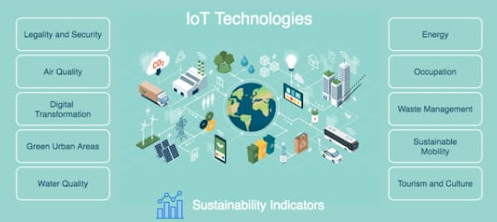How Automation Can Help Organizations Unleash the Power of IoT
- giovannirodriguez24
- Nov 29, 2022
- 3 min read

Adding automation to your IoT deployment can make a world of difference, as it can provide many benefits to organizations. From ensuring efficient and cost-effective operations to creating a more responsive business model, automation can help public and private organizations to unleash the potential of IoT.
What is Connected Automation?
Several manufacturers are making the leap from manual to automated processes in order to reduce costs and increase efficiencies. In addition, robotic process automation is believed to be a key catalyst to the fourth industrial revolution.
This is not to say that it is a cakewalk. Nevertheless, companies looking to implement such a strategy will need to overcome a number of hurdles - namely, poor data quality and a shortage of skilled labor. While the technology is still a work in progress, a new breed of automation solutions has sprung up. The key to success is the proper implementation of the aforementioned technologies.
Using a Connected Automation solution, an organization can unlock all the data that exists in their organization. In turn, they can utilize it to improve decision-making, increase employee productivity and boost customer satisfaction. With the proper implementation, companies can reduce their labor costs, boost production output, and eliminate manual labor in the manufacturing process.
In addition, it's estimated that a Connected Automation solution is able to deliver a staggering 3x return on investment, which is a worthy feat in today's competitive manufacturing environment. To reap the benefits of a successful implementation, organizations should consider a number of factors - namely, a proper deployment strategy and a solid infrastructure.
IoT challenges
Using automation to help organizations unlock the potential of the Internet of Things (IoT) challenges can be a great way to improve business efficiency. The data gathered by devices can give companies valuable information about customer behavior and operational processes. It can also help reduce downtime in manufacturing, which can improve safety.
In order to effectively use IoT, companies need to learn new skills. They should also invest in new technologies. The IoT device and applications must be scalable, interoperable, and IP-enabled. In addition, they need to be able to communicate with each other.
The IoT is a network of devices connected wirelessly. These devices collect data from their environment and transmit it to the cloud. They also have to be secured. Some devices also collect personal information.
The data that is collected must be processed and then made available to the end user in a useful form. This could be a message, a control element, or another thing.
The best way to implement IoT is to start with your business processes. Then you need to analyze the data gathered to figure out what you want to do. This may include sending a message to a customer, alerting employees, or performing another task.
In addition, the data collected must be analyzed to figure out the most effective way to process it. For example, if the data from a device indicates that a part is failing, then you need to find out how to prevent it from happening. This can be done through predictive maintenance. The data can also be used to figure out how to improve humidity control, lighting, or another area.
Connected automation execution
Bringing IoT and automation together can deliver significant benefits for companies. These benefits can range from increased productivity and efficiency to enhancing workplace safety. But before organizations can take advantage of IoT and automation solutions, they need to first identify requirements, set expectations, and explore tools.
The most important step for organizations to take before they can begin integrating IoT and automation is to gain staff buy-in. This is crucial because automation requires staff to learn and understand the process. Training is also necessary to ensure a positive attitude toward change and automation execution.
Connected automation delivers high-speed processes that are securely integrated with physical systems and digital systems. It orchestrates API mini-robots and multivendor software robots to deliver high-quality data-rich processes.
Using these tools, organizations can take advantage of data-based decisions that can be immediately actioned. This can be done without having to make big changes to existing systems. This can include using AI and machine learning to increase problem-solving capabilities.
Connected automation can also be used to bring human experience to IoT processes. This can be achieved through intelligently automated issue handling and bots that learn the preferences of workers.
Connected automation can also be natively integrated with analytics systems. This allows organizations to gain valuable insights from sensors and other data. It can also be used to power security systems.
Conclusion
Connected automation is an important factor in Industry 4.0 and the future of IoT. While challenges with data security, interoperability, and complexity still exist, they can be overcome with the right planning and execution. By understanding connected automation and its potential, organizations can stay ahead of the competition and prepare for a more efficient future. Follow us on LinkedIn and visit our website for more information about how you can implement connect automation in your organization.








Комментарии